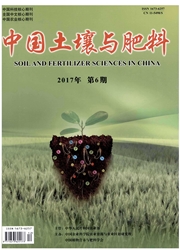

 中文摘要:
中文摘要:
通过对文献资料的分析指出,华北平原区施肥对农田环境可能造成的立体污染主要包括对地表水、地下水、大气、土壤以及农产品的污染。施肥对地表水的污染主要表现为水体的富营养化,白洋淀污染物中氮磷的输入量分别占总输入量的50.6%和34.1%;施肥对地下水的污染主要是造成地下水硝酸盐或亚硝酸盐超标;施肥对大气的污染主要是增加了N2O的排放,整个华北平原区因氮肥施用导致的N2O排放量每年约为2.25万t;施肥对土壤的污染包括重金属累积、养分失调、肥力下降、次生盐渍化多个方面;施肥对农产品的污染主要表现为农产品硝酸盐超标和重金属污染。农田优化施肥技术如控制肥料用量、平衡施肥、水肥合理配合、适当的施肥方法与施肥时期、缓控释肥料的应用等是提高肥料利用率、控制或减少农田立体污染的主要途径。
 英文摘要:
英文摘要:
Through literature summarization,the possible agricultural tridimension pollution to the farmland environment due to fertilization in northern China plain includes the pollution to the surface water,to the underground water,to the atmosphere,to the soil and to the farming products.The surface water pollution is mainly its nutrition enrichment,such as the Baiyangdian lake,in which the content of N and P takes 50.6% and 34.1% of the total contamination substance respectively.The underground water pollution is mainly the extra high content of the nitrate or nitrite.The atmosphere pollution is mainly caused by the increased N2O emission,which is counted as 22 500 tons annually through fertilization.The soil pollution aspects include the accomulation of heavy metal,the nutrient malajustment,the fertility decline,the soil salination and so on.The farming product pollution shows its extra high content of nitrate and heavy metal.The main may for increasing the fertilization efficiency and controlling or reducing the tridimension pollution of the fertilization to the farmland environment is to use optimization fertilization techniques including controlling the fertilizer rate,balanced fertilization,coordination of the fertilization with irrigation,suitable method and time of fertilization and the usage of the slow-released fertilizer.
 同期刊论文项目
同期刊论文项目
 同项目期刊论文
同项目期刊论文
 期刊信息
期刊信息
